It goes without saying that many terms and concepts from science, and particularly physics, find themselves transported from the pages of journals and reports to the comic book page or TV screen — albeit intrinsically changed. Quantum teleportation is an interesting example of this process working in reverse.
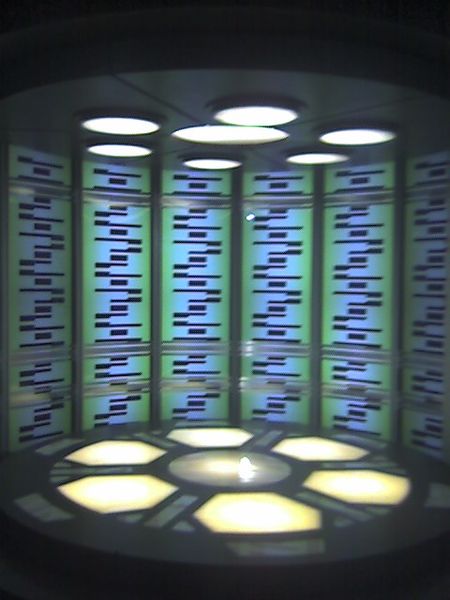
Though physicist and information theorist Charles Bennet took the term ‘teleportation’ from popular culture, quantum teleportation is radically different than the process used by the crew of the Enterprise to ‘beam down’ to an alien vista. But despite this; that image of Kirk, Spock, Bones, and a crew of hapless red shirts travelling down to the surface of a planet and back — albeit minus several of the red shirts — is so ubiquitous it’s hard for even professional physicists to escape.
“Of course, I think of Star Trek where people and things are being ‘beamed-up’,” Ulf Leonhardt from the Department of Physics of Complex Systems at the Weizmann Institute of Science tells me when I ask him what the word ‘teleportation’ means to him. And Leonhardt is no stranger to quantum teleportation either. He is renowned for his work in quantum optics — one the fields in which quantum teleportation is explored, in fact, its no exaggeration to say ‘he wrote the book on it.’
This ubiquity of the pop-culture interpretation of teleportation is a special kind of hindrance when it comes to the understanding of quantum teleportation as the two concepts are so radically different.
The first, and most radical difference, you won’t be using quantum teleportation to beam to the surface of an alien world or down to the local shops anytime soon. This isn’t because quantum teleportation isn’t up and running; we’ve had the technology in operation since the mid-nineties. It’s because quantum teleportation has nothing to do with the transport of matter.
Mind over Matter–How Quantum Teleportation Shifts Information
The idea of being able to instantly — or almost instantly — relocate matter from one location to another, was granted the name ‘teleportation’ by a purveyor of the weird Charles Fort in his 1931 book ‘Lo!’. But despite this; the idea existed sometime before this.
Many early examples of teleportation were, unsurprisingly, described as being magical in nature, but with the advent of the industrial revolution, remarkable tales of intrigue and suspense began to move away from supernatural explanations to ones of science–albeit none more credible in nature. The first example of matter being transported instantaneously from one location to another being performed ‘scientifically’ occurred in an 1897 novel.
In Fred T. Jane’s ‘To Venus in Five Seconds: An Account of the Strange Disappearance of Thomas Plummer, Pillmaker,’ the titular hero is transported from a pleasant summer house — albeit filled with strange machinery — to the planet Venus where he encounters warring locals and some other displaced Brits. This is the first recorded example of scientific equipment used to transport a hero to the surface of an alien world in fiction, a function which will, of course, become the most infamous use for teleportation.
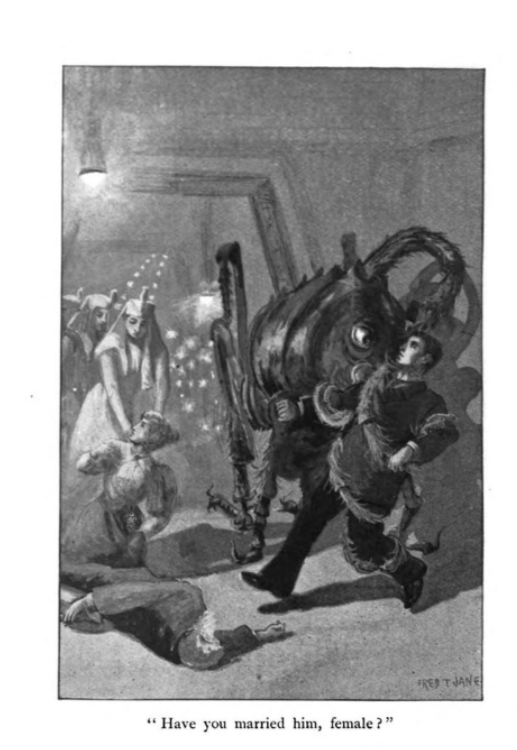
But quantum teleportation doesn’t concern the transport of matter — instantly or otherwise — rather it’s about the transmission of information.
“I think for a layman teleportation means instantaneous transport of matter, but a physicist knows that this is impossible,” Leonhardt explains. “Rather, teleportation is the transport of the information of how to assemble matter to make up an object.
“There is zero chance for the instantaneous transport of matter, but a good chance for the transfer of quantum information of not-too-complex systems. Teleporting people is out of the question, though.”
Ulf Leonhardt, author of ‘Essential Quantum Optics’
So if you’re not going to be taking a trip in a teleporter any time soon. With that said, we can investigate the nature of the information that can be sent via quantum teleportation.
From Here to There: State to State Communication
As quantum teleportation doesn’t concern the transmission of matter, but information, it’s more correct to regard it as a form of communication rather than one of transport like its sci-fi counterpart. But that leaves the question, what is being communicated?
“Quantum teleportation is the transport of a quantum state from one object to another,” Leonhardt says. “The quantum state contains all the possible information about the object.”
Thus, quantum teleportation really means transferring the quantum structure of an object from one place to another without the movement of that physical object. This ‘quantum structure’ refers to qualities that a system or a particle can possess, things like momentum, polarization and spin.

This information is encoded in qubits — the quantum-mechanical analogue of classical bits. Whereas a bit can only hold the information ‘true’ or ‘false’ a qubit can be encoded with a deep wealth of information. So, quantum teleportation is a mechanism of moving this qubit without moving the particle with which it is associated. This communication requires the system at the starting point and the system representing the endpoint are entangled.
“The quantum state cannot be measured for an individual system, because an observation may ruin it,” Leonhardt explains.
“Entanglement between the two ports of the quantum teleportation system is an essential ingredient.”
Ulf Leonhardt, author of ‘Essential Quantum Optics’
The first experiments with quantum teleportation dealt with the transfer of state information between single entangled photons, but it has since been realised in a variety of quantum systems — electrons, ions, atoms and even superconducting circuits.
What is important to note though, is that quantum teleportation isn’t simply creating two copies of the same quantum system. In fact, that is something expressly forbidden by the rules of quantum physics.
No Cloning Around!
Christopher Nolan’s magical 2006 thriller The Prestige–based upon a 1995 novel by Christopher Priest– focuses on the intensifying rivalry of magicians Robert Angier (Hugh Jackman) and Alfred Borden (Christian Bale). The feud consumes both men costing the lives of both their loved ones and ultimately themselves.
During the course of this self-destruction, in an attempt to out-do Borden’s most spectacular illusion, Angier seeks the help of a fictionalised version of Nikola Tesla. Telsa provides Angier with a teleportation device but warns him of the machine’s terrible cost.
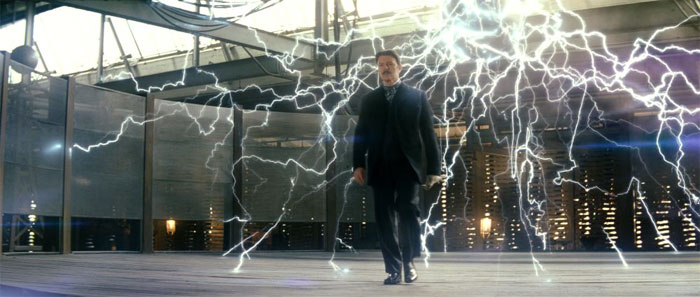
That cost is that every time the machine is used, it creates a copy of Angier. A clone. Meaning that the illusionist must murder the ‘original him’ each time the trick is performed. He dispatches ‘himself’ in a tank of water hidden beneath the stage where the teleport pod sits. A fitting way for a magician to go.
But, on the quantum scale, there are specific rules in place to prevent the cloning of a system every time an act of quantum prestidigitation is performed. Quantum teleportation has a strict ‘no cloning’ rule. “The no-cloning theorem states that one cannot create two identical copies from the same individual quantum system,” Leonhardt states.
“The quantum state is too fragile and would be compromised in such a process.”
Ulf Leonhardt, author of ‘Essential Quantum Optics’
The Heisenberg uncertainty principle is just one of the rules of quantum physics that the successful cloning of a system would jeopardise. The most well-known version of the uncertainty principle, for example, states that it is impossible to precisely measure the momentum and the position of a quantum system. The more precisely one knows one, the less precisely one can know the other.
But, if quantum teleportation allowed a system to be cloned, then an enterprising researcher could measure the position of the original system and simultaneously measure the momentum of the ‘clone’, thus violating this rule.
In fact, all sorts of messiness would ensue with a system that could be cloned, including, eventually, the possible violation of causality itself.
That means that quantum teleportation really ‘moves’ the quantum state from one location to another, destroying that state in the original port… Possibly by drowning it in a tank.
Quantum Teleportation… Not Instantaneous, But ASAP
Despite the fact teleportation mishaps often became the focus of episodes of Star Trek, initially, it was little more than a Deux ex Machina that allowed the story to flow without characters being tied up by long shuttle journeys. In order for the narrative of a concise 42-minute episode of TV to flow in a pleasing way, it was necessary for characters to be able to instantly move from place to place.
Unfortunately, quantum teleportation differs from its pop-culture ancestor in this respect too.
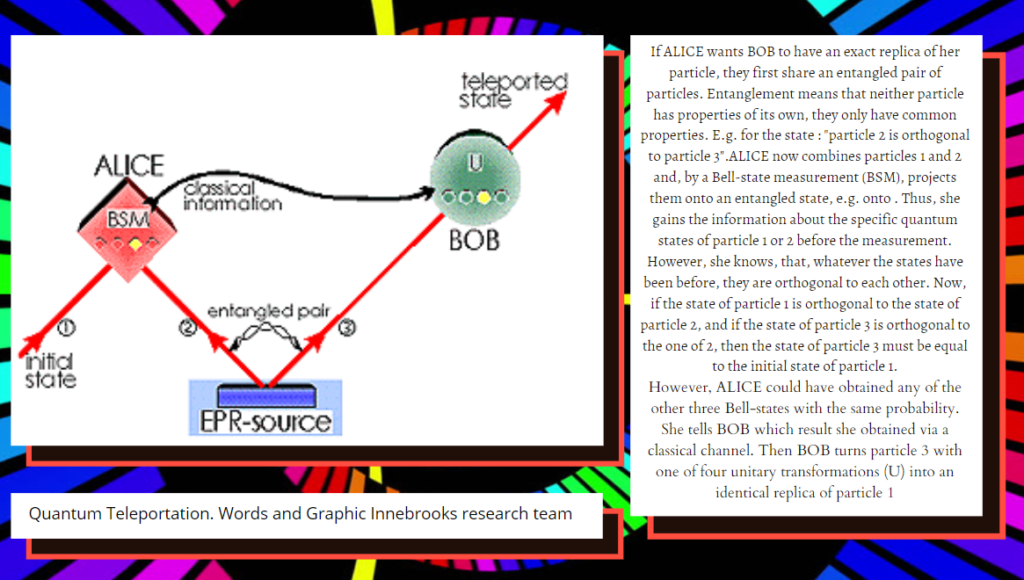
Though instant transmission of information in quantum physics does exist in the form of the instant change in an entangled system when a measurement is made on one part of that system. That measurement and the adoption of a state that it causes results in the partner system adopting the corresponding state instantly — even if it is at the opposite side of the Universe.
This apparent violation of the universal speed limit of the speed of light in a vacuum troubled Einstein so much he referred to it as ‘spooky action at a distance’ and suggested that it demonstrated quantum physics was an incomplete theory with hidden variables yet to be discovered. But, this aspect of quantum physics has been confirmed by decades of research after the Austrian physicist’s death.
Quantum physics is complete, information does travel between entangled quantum systems or particles instantaneously. Yet despite the fact that quantum teleportation functions on the basis of entanglement — passing a state between two entangled particles — that doesn’t mean that quantum teleportation can transfer information instantly too.
That’s because quantum teleportation isn’t entirely quantum.
When a qubit is transmitted from a sender to a receiver — we’ll call them Alice and Bob respectively as has become standard when describing quantum communication — it’s necessary to transmit two bits of classical information per qubit from Alice to Bob.
This means a classical communication channel has to be created so that Alice and Bob can communicate the results of their measurements. If this isn’t done, Alice and Bob have no way to reconstruct the initial state and the reconstruction will be random.
Thus, the downside of this is that it limits the speed of information transfer to the speed of classic communication. A qubit can’t be reconstructed before the classical information is received. Researchers can use lasers and photons as the basis of this classical communication system, so even though there is a speed limit, it’s the fastest speed achievable. This also means it can be achieved through ‘open space’ without the need for fiber optic cables.
Or course, that means not only can Kirk not instantly return to the Enterprise, but he can’t even get a ‘beam me up’ command sent instantly.
Quantum Teleportation in Practice
The most likely use of quantum teleportation is in the development of quantum computing, quantum networks, and eventually, a quantum internet. Currently, academic debate over this quantum future is focused on which quantum teleportation system is most reliable.
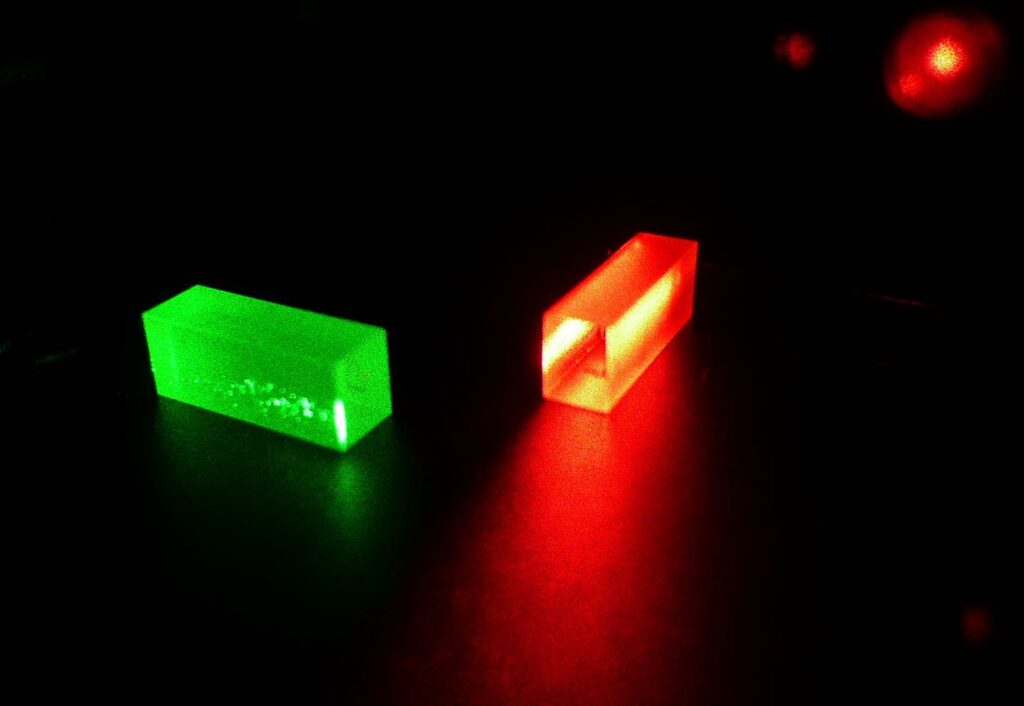
In 2015 paper published in Nature Photonics scientists from the Freie Universität Berlin and the Universities of Tokyo and Toronto, performed a comprehensive review of theory and experiment surrounding quantum teleportation, concluding that no technology in isolation yet provides the perfect solution, meaning hybridisation is needed if quantum computing is ever to be a reality.
This means that many physicists are currently working on improving the distances over which quantum teleportation can be achieved and the kind of quantum systems that states can be communicated between.
An example of this is the fascinating work of Nicholas Gisin at the University of Geneva (UNIGE). Gisin and his team have consistently been at the cutting edge of pushing the distances across which quantum teleportation can be achieved. In a 2014 study, Gisin’s UNIGE team not only pushed the distance across which a state could be teleported — over 25 meters through an optical cable — but they also managed to communicate the state from a photon to a solid crystal, showing that states can be passed between radically divergent systems.
Gisin’s research is constantly being improved upon thus the distance across which a quantum state can be transmitted is stretching. And this includes maybe finally reaching the ‘final frontier.’
Space: Probably Not The Final Frontier for Quantum Teleportation
In July this year, scientists finally made teleportation to space a reality , maybe offering some compensation to disappointed sci-fi fans.
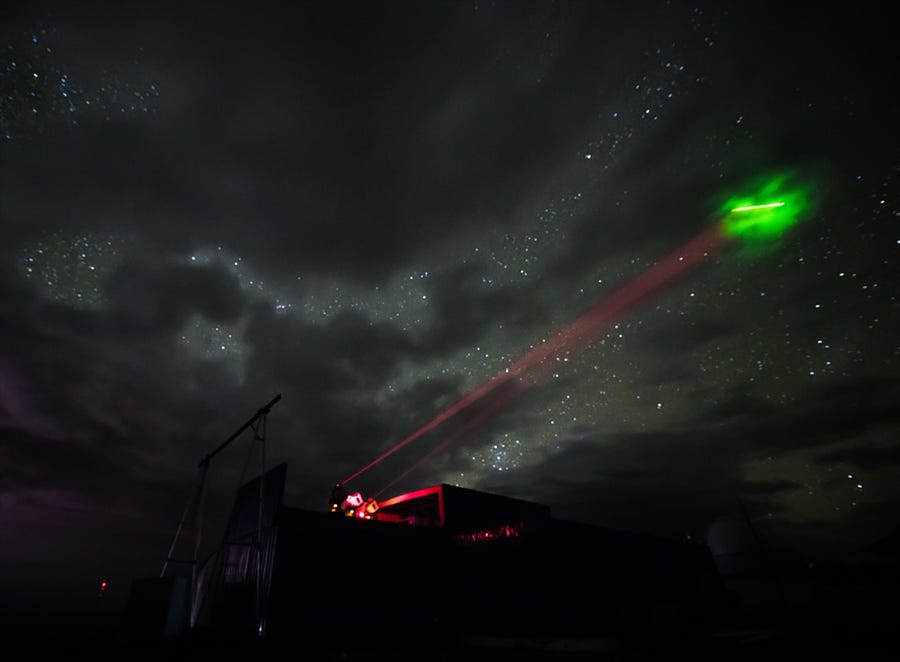
In a series of experiments, described by a paper published in the journal Science an international team of researchers described the communication of a quantum state into space and across a distance of up to 870 miles to the Chinese quantum-enabled satellite Micius. The research represented the first meaningful quantum optical experiment to test the fundamental physics existing between quantum theory and gravity.
Soon, a new Chinese satellite will orbit Earth a distance up to sixty times greater than that between Micius–launched in 2016– and the planet’s surface. This will allow researchers to push the boundaries of quantum teleportation even further.
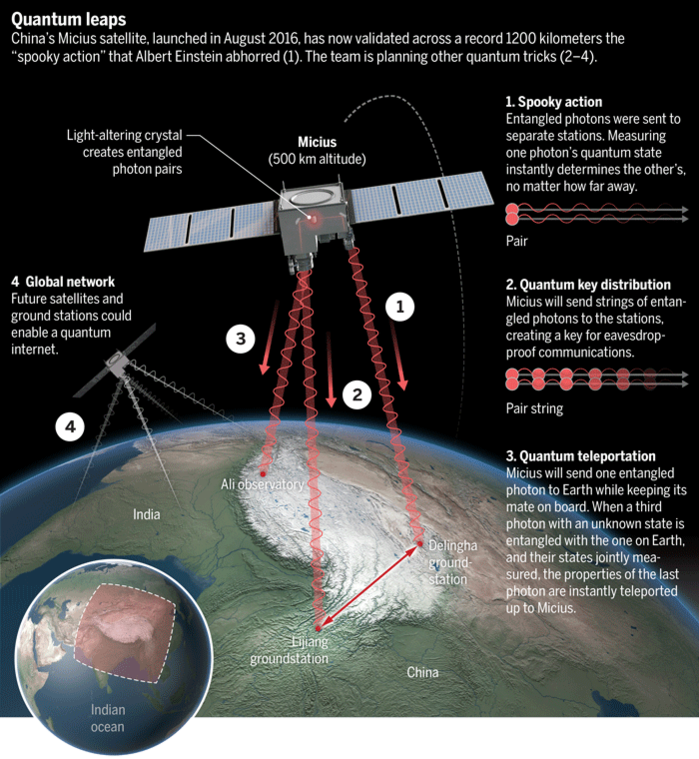
Ulf Leonhardt believes, however, that our understanding of quantum teleportation and our concept of what is achievable within will eventually become as outmoded as the science described in the escapades of Thomas Plummer.
“I like science fiction as scenarios of social thought experiments, but not so much for technological dreams,” Leonhardt says. “It is amusing to browse through Victorian science fiction. They projected their world of steel and steam into the future, which clearly shows the limits of technological imagination.”
“Our modern projections will share the same fate.”
Ulf Leonhardt, author of ‘Essential Quantum Optics’
Sources and Further Reading
Leonhardt. L, ‘Essential Quantum Optics,’ Cambridge University Press, [2010].
Bussières. F, Clausen. C, Gisin. N, et al, ‘Quantum teleportation from a telecom-wavelength photon to a solid-state quantum memory,’ Nature Photonics, [2014]
Pirandola. S, Eisert. J, Weedbrook. C, et al, ‘Advances in quantum teleportation,’ Nature Photonics, [2015]





